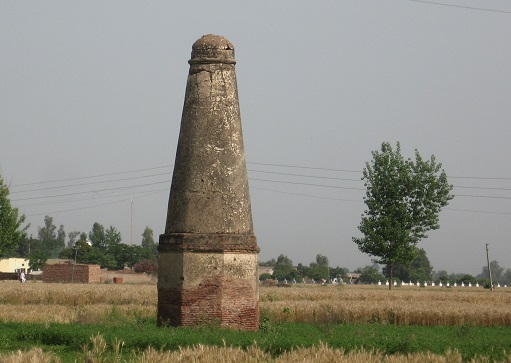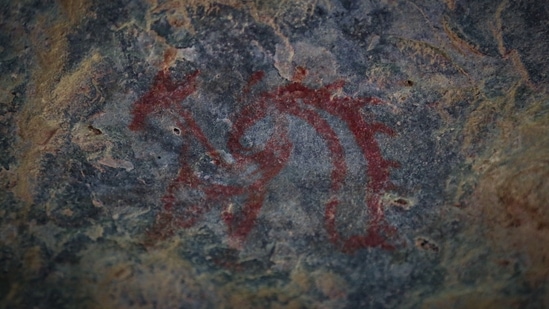The glitzy world of Indian film-making, especially of the Bollywood variety is far removed from the Mughal empire. No, never mind the peculiar portrayals of emperors and their lives in movies, but the real thing. Where the Mughals set best into movies is in a less active way – when the monuments they built serve as the setting for a film. Harmless usage and one that is not open to odd interpretations by over imaginative scriptwriters. While there are several such locations, this story is about one little place in the heart of Punjab.
But, before we go further, here’s a context:
The Mughals were great travellers. Babar came all the way from Samarkand to India, his son Humayun wandered through Persia in his years of exile, Akbar traveled through the land and even Aurangzeb spent more years under tents than in a palace. Given this inclination to travel, it is easy to understand why they firmed up the Grand Trunk Road created by Sher Shah Sur, who in turn had inherited an ancient route that traversed the Uttara Path. They built kos minars as highway distance markers and put together a string of caravan sarais at regular distances for travellers to rest in.

A Mughal caravan sarai in Punjab
Heritage stopover
The sarais were built as small fortresses, surrounded by battlemented walls and protected by soldiers. Each sarai had over a hundred rooms for people to rest in, a mosque they could pray in as well as food and water both for them and their animals. In their prime, they must have bustled with life and energy. Most sarais still extant in India stand abandoned, in Punjab, Haryana and Uttar Pradesh, a result of the building of modern highways and even more recent expressways. With the Bharatmala in full progress, perhaps it is time to examine these pearls of an old Bharatmala once more.
Nearly a decade and a half ago, a Bollywood blockbuster revived some interest in these structures – Rang De Basanti – was partly shot in a sarai. In fact, the makers of the movie seem to have used a Mughal caravan sarai as a recurring motif across critical scenes. Early on in the movie, the sarai became the backdrop for Aamir Khan and co. when they were having a good time.

A screenshot from the film, capturing the sarai as a setting for a scene
Later, it became the setting for a major decision the group takes. Glimpses of the structure were also visible at the end of the movie. Shot from interesting angles, the sarai looked stunning and this was enough for a lot of people to get interested.
Needle in a haystack
Travelling through Punjab a decade ago, it was perhaps natural that I ended up looking for the sarai where the movie had been shot. Driving from the international border with Pakistan on the route of the old Grand Trunk Road makes for a great experience for a history lover. Nuggets of heritage treasure dot the trail with stunning caravan sarais at Amaanat Khan, Malhian Kalan, Doraha, beautiful tombs at Nakodar and the remains of a great city at Sirhind. I didn’t have the name of the sarai used in the movie, but was faced with the task of having to recognize it from screenshots. Given that all sarais are built on an identical grid – with a square open courtyard surrounded on all four sides by a chain of rooms broken only by two facing gateways – the task looked difficult.
Eventually, the clues gleaned from the screenshots helped – in enabling all the other sarais to be struck off a list and the correct one pinned down. The prints showed the sarai to be amid green fields, which helped in striking off the sarais at Amaanat Khan, Fatehabad, Sultanpur Lodhi and Nurmahal, all of which lie in or near towns. That it was slightly dilapidated helped rule out the Dakhini sarai at Malhian Kalan and the sarai at Shambhu near Ambala, both in reasonably good condition. Sarai Aam Khas Bagh at Sirhind is structurally different, so that left it to a toss up between two sarais in Ludhiana district, Doraha and Lashkari Khan. Doraha sarai was in good shape, but my quarry was finally located at Lashkari Khan.
Sarai uncommon

Sarai Lashkari Khan, ruined yet magnificent
Standing among verdant green fields, with its craggy battlements and ruined tower, Sarai Lashkari Khan was a poet’s delight. A dirt track led to the structure. An old farmer working on his crop near the main gateway helped identify it as the place where ‘shooting’ had taken place thought he was blissfully ignorant of the film. Walking in, I got conclusive evidence of this being the right sarai. The result of a strange judicial decision which gave the structure to the ASI to maintain and the inner land to the farmers to cultivate, this is the only sarai which has fields blooming inside. The Rang De Basanti screen prints reflect the fields within the sarai. Looking around, it is easy to fantasize about seeing the cast of the movie walking through the ruins, speaking determinedly of their objective.

Inside view of Sarai Lashkari Khan, with crops growing inside
Possibly the last sarai to be built on this old Mughal highway, it was built in the period 1669-70 by Lashkar Khan, a general in Aurangzeb’s army. Centuries after the last merchant caravan has passed from its doorways, it still has an atmosphere, something which the makers of the Bollywood blockbuster must have realized. While I was there, a farmer on a bullock cart made his way out of one of the gateways. For the one moment that the cart was framed in the sarai gateway, time stood still. This was a picture unchanged for hundreds of years.






